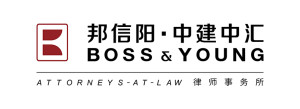The People’s Bank of China, the China Banking and Insurance Regulatory Commission, the China Securities Regulatory Commission and the State Administration of Foreign Exchange jointly issued on 27 April 2018 the Guiding Opinions on Regulating the Asset Management Business of Financial Institutions (the new rules). On 20 July, the Notice on Further Clarifying Relevant Matters in the Guiding Opinions on Regulating the Asset Management Business of Financial Institutions (the detailed rules) were issued. These further explain and clarify details in the implementation of the new rules. On the whole, while adhering to the general direction set forth, the detailed rules push forward the steady transition to the new rules mainly by adjusting the rhythm and intensity, while allowing a suitable amount of slack in the details and the transition arrangements.

Partner
Boss & Young
In principle, the detailed rules do not go beyond or revise the new rules, and they do not modify such principles as the elimination of mismatching terms, dismantling of fund pools, etc. The main points of the detailed rules are: (1) they specify that publicly offered asset-management (AM) products can appropriately invest in non-standard assets; (2) during the transition period, existing products can invest in new assets; (3) qualified fixed-term open-ended AM products are measured at their amortized costs; (4) the rules relax the requirements for returning non-standard assets to the balance sheet and encourage the offering of Tier 2 capital bonds; and (5) the rules do not set rigid step-by-step pressure-reduction requirements with financial institutions to effect rectification at their own discretion.
MARKET IMPACT
Stabilizing market expectations. Since the official release of the new rules, such situations as overly rushed implementation or adoption of wait-and-see stances by certain financial institutions have arisen due to the lack of clarity in numerous details, thereby exacerbating some level of anxiety in the financial market. In eliminating misunderstandings of the policies and resulting deviations, the issuance of the detailed rules is conducive to clarifying and stabilizing market expectations. During the transition period, financial institutions can determine the pace of shrinking and clearing of existing products at their own discretion, without having to rely on a “one size fits all” schedule. The detailed rules also strengthen the practicability of financial institutions, ensuring a stable operation of the financial market and better supporting the adjustment, transformation and upgrading of the economic structure.
Reducing pressure on financing for the real economy. With the push for stricter regulations and the elimination of gearing, the rigid implementation of the new rules could make financing for the real economy more difficult. However, the detailed rules’ providing for the investments in new assets by the existing products issued by financial institutions is conducive to restoring the investment capacity of existing products that have stopped and taken a wait-and-see stance, alleviating the pressure on refinancing of the real economy. It is particularly conducive to the financing of sectors on which the state places particular weight — large engineering projects and micro, small and medium-sized enterprises.
The relaxation on entities that invest in non-standard assets will help to moderate rapidly declining entrusted loans and trust loans, thereby filling the financing gaps that opened up when the real economy was unable, for a time, to bring the off-balance sheet back onto the balance sheet and steadying economic growth. Furthermore, the detailed rules remove varying understandings and doubts in the market, so that business can progress smoothly. They also reduce pressure on financing for the real economy, giving hope for an improvement in the social credit and financing situation.

Associate
Boss & Young
IMPACT ON FINANCIAL INSTITUTIONS
Impact on and prospects for banking industry. The detailed rules add to the advantages of wealth management with provisions that markedly relax the scope of investment, that greatly relax net-asset-value requirements, and that permit cash management type wealth management and use of the amortized cost method, plus the shadow pricing method, for valuation. All these will further enhance the advantages of wealth management over the various types of AM products. Additionally, the improvement of the social credit and financing situation will reduce the pressure on the recovery of bank funds, which will help in relaxing commercial banks’ liability-side and asset-side pressures.
In future, banks should actively adjust the asset-debt structure of their wealth- management businesses. On the liability side, they make an effort to offer NAV wealth-management products, while also duly educating investors. On the product sales side, they mold professional AM investment research teams to enhance their related capabilities.
Impact on and prospects for the trust industry. The detailed rules mainly impact on the trust industry in three ways: (1) proceeds from public offerings may be invested in non-standard assets, benefiting trusts’ non-standard asset investment business; (2) relaxation of NAV management requirements, and trust loan type and bond fund pool type products can use the amortized cost method, reducing further the shock to the trust industry; and (3) financial institutions may formulate their rectification plans at their own discretion, giving trust companies flexibility for their arrangements.
The non-standard asset business has always been one of the strengths of trust companies, but if they wish to continue leveraging this advantage in future, they will still need to enhance their levels of professionalism, train their sights more on the real economy and truly return to their native purpose of assisting economic growth.
Impact on and prospects for the securities industry. The detailed rules provide more reasonable arrangements for the impact of the new rules with respect to mismatched terms, non-standard asset business, etc., while also leaving room for future innovations in the securities business, thereby better balancing the relationship between innovation efficiency and risk controls. Generally speaking, restrictions have been imposed on channel type products and non-standard asset products, and self-determined management of business scale will grow further.
Wu Jiayin is a partner and Li Sixian is an associate at Boss & Young
中国上海市黄浦区中山南路100号
金外滩国际广场12-15楼 邮编:200010
12/F-15/F, 100 Bund Square
100 South Zhongshan Road
Huangpu District, Shanghai 200010, China
电话 Tel: +86 21 2316 9090
传真 Fax: +86 21 2316 9000
电子邮箱 E-mail:
wujiayin@boss-young.com
lisixian@boss-young.com






















